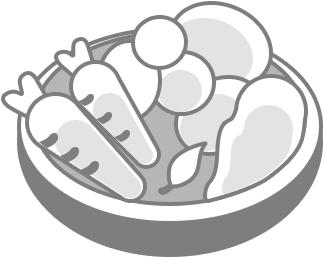Balsamic-Glazed Ham With Parsley-Cornichon Gremolata
This recipe features a succulent fully cooked bone-in ham coated with a delicious balsamic vinegar and mustard glaze, resulting in a beautifully glossy finish. Complement the ham with a flavorful gremolata made with parsley, cornichons, capers, and more. This dish is perfect for gatherings and special occasions.
— Constant Cookbook
Ingredients
- 1/2 fully cooked bone-in ham, preferably from the shank end, 6 1/2 to 8 lb.
- 1/4 cup balsamic vinegar
- 1 cup firmly packed dark brown sugar
- 1 1/2 Tbs. dry mustard
- 1 cup firmly packed fresh flat-leaf parsley leaves, minced
- 10 cornichons, minced, plus 1 tsp. brine
- 1/4 cup capers, rinsed and coarsely chopped
- 3 green onions, white and light green portions, minced
- 1/2 cup extra-virgin olive oil
- 2 Tbs. white wine vinegar
- 1/4 tsp. kosher salt
- 1/2 tsp. freshly ground pepper
Instructions
- Remove the ham from the refrigerator and let stand at room temperature for 2 hours.
- Preheat an oven to 250°F. Line a large, heavy roasting pan with aluminum foil.
- Trim the fat on the ham to 1/4 to 1/2 inch, if necessary, and score in a diamond pattern. Place the ham, cut side down, in the pan and cover tightly with foil. Bake for 10 minutes per pound.
- In a small bowl, combine the vinegar, sugar and mustard and whisk into a thin paste.
- Remove the foil from the ham and brush the mustard mixture generously all over the exposed surface of the ham. Increase the oven temperature to 425°F and roast the ham, basting it every 5 minutes or so with the mustard mixture, until dark and glossy, 15 to 20 minutes. Transfer the ham to a carving board and let rest for 20 to 45 minutes.
- Meanwhile, make the gremolata: In a nonreactive bowl, whisk together the parsley, cornichons and brine, capers, green onions, olive oil and vinegar. Whisk in the salt and pepper.
- Cut the ham into slices and serve immediately with the gremolata. Serves 10 to 12.
- <b>A note from the butcher:</b> Most hams sold today are actually half hams, cut from a whole leg of pork. A butt-end ham comes from the upper thigh, and a shank-end ham comes from lower down the leg. A butt-end ham tends to be a little more expensive than a shank-end ham, and some say it has a meatier flavor, though it has more gristle and bone to work around. I am in the shank-is-better camp: I find that it yields lovely, juicy red meat and is easier to carve.
- &mdash; Ron Savenor, Savenor&rsquo;s Market, Boston, MA
- Adapted from Williams-Sonoma <i>The Cook and The Butcher</i>, by Brigit Binns (Weldon Owen, Inc., 2011).

Comments
No comments found.